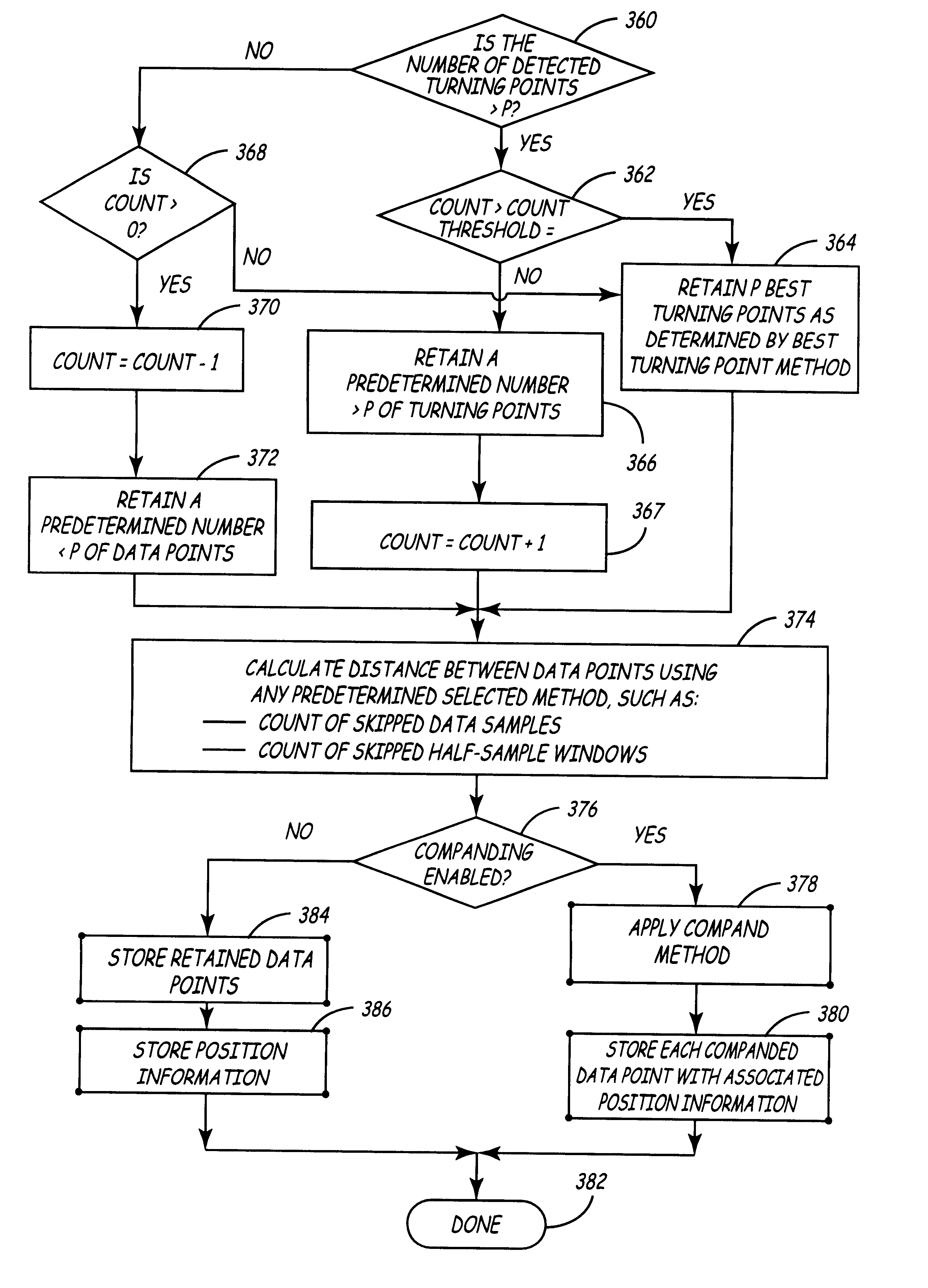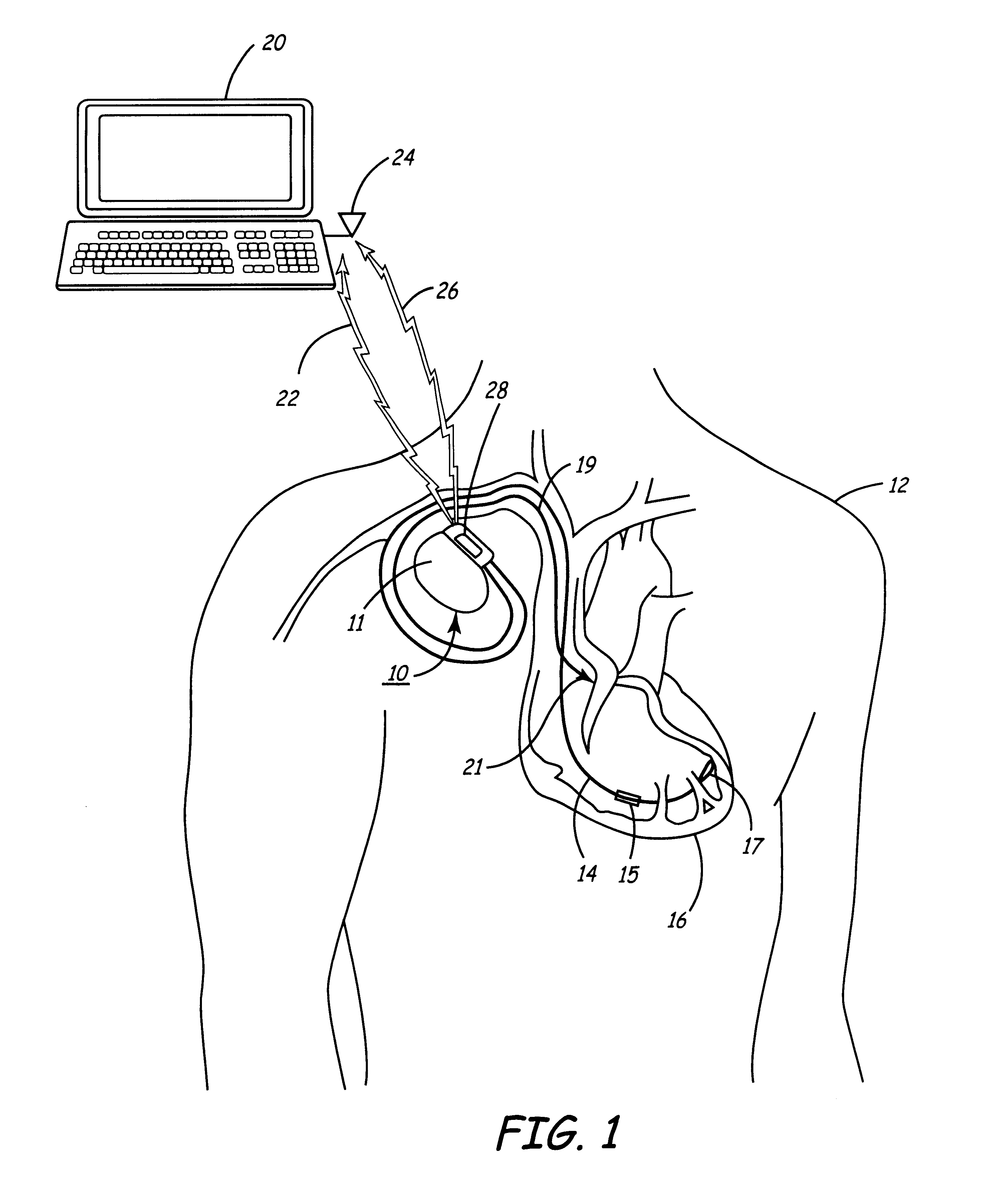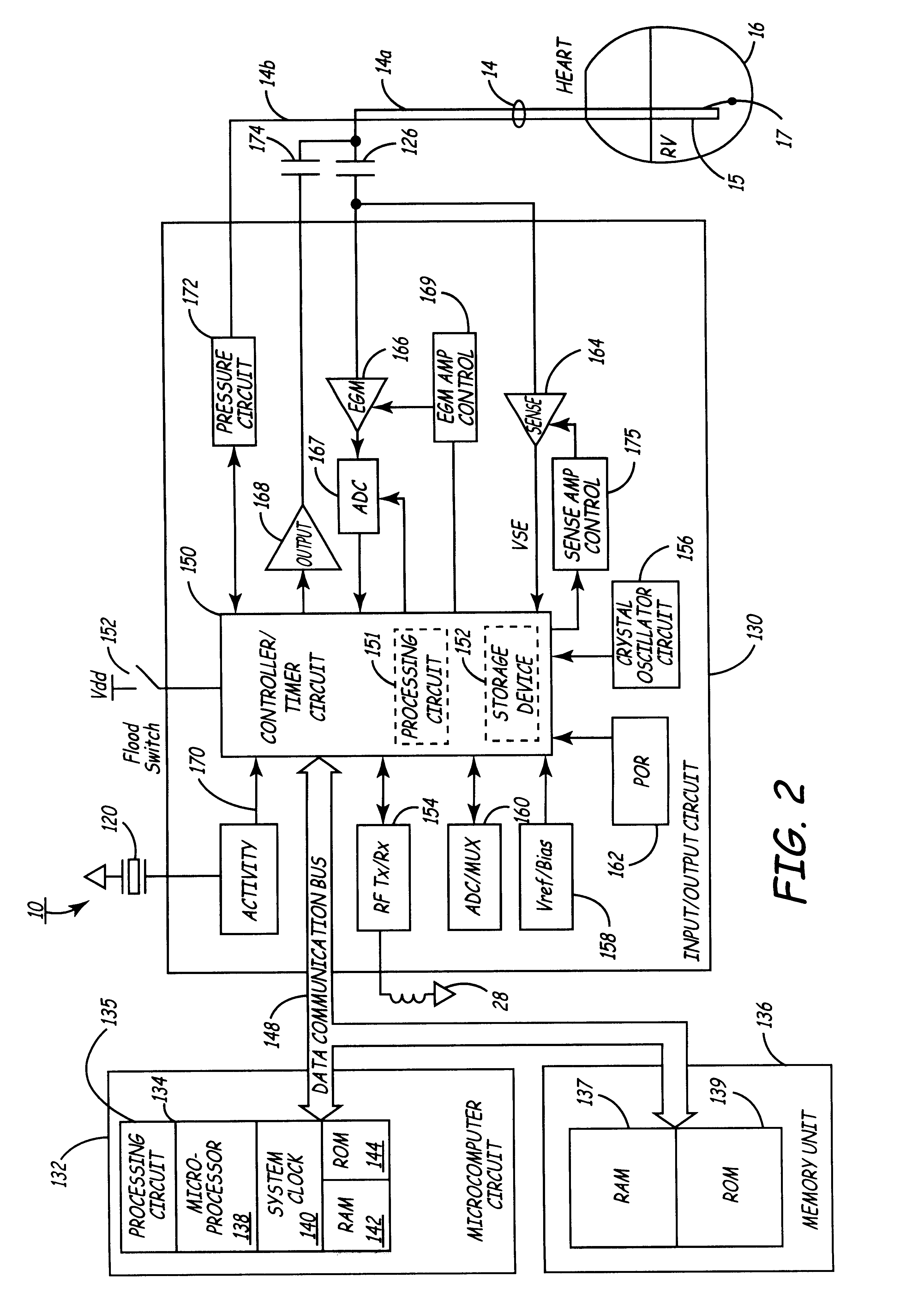Method and apparatus for data compression of heart signals
a heart signal and data compression technology, applied in the field of heart signal data compression methods and apparatuses, can solve the problems of sheer volume of data, power consumption, storage limitations of monitoring systems, etc., and achieve the effect of less memory space, variable compression ratio, and less memory spa
- Summary
- Abstract
- Description
- Claims
- Application Information
AI Technical Summary
Benefits of technology
Problems solved by technology
Method used
Image
Examples
first embodiment
If it is determined that both X.sub.1 and X.sub.2 are turning points, the current invention provides superior data compression by retaining the "best" turning point. The best turning point may be selected using one of several embodiments of Applicants' invention. the "unshared" legs of the portion of the waveform in question are used to determine the best turning point. This is best illustrated by considering FIG. 4.
FIG. 4 is a timing diagram of a QRS complex as may appear in an EGM signal, and illustrates application of the "largest unshared leg" embodiment of the best turning point system. In this example, data points 220, 222, 224, and 226 will be considered X.sub.0, X.sub.1, X.sub.2, and X.sub.3, respectively. According to this embodiment, a comparison is made between the waveform segment between X.sub.0 and X.sub.1, and the waveform segment between X.sub.2 and X.sub.3. More specifically, the difference between the waveform amplitude (which in this instance is a voltage measure...
case i
{[(V.sub.1 -V.sub.0)(V.sub.2 -VI.sub.1)0)]} (CASE I)
OR
case ii
{[V.sub.1 -
then retain X.sub.1, otherwise, retain X.sub.2.
Case I selects X.sub.1 when X.sub.1 is the only turning point. Case II selects X.sub.1 when both X.sub.1 and X.sub.2 are turning points and X.sub.2 is less than X.sub.1. In this case, the best turning point is therefore the turning point that is the least positive. When applied to sample points X.sub.1 and X.sub.2 of FIG. 3, this mechanism will retain X.sub.1 since V.sub.1 is less positive than V.sub.2.
Cascading
As mentioned previously, the improved turning point mechanism may be applied multiple times to the same data set in a cascaded fashion to achieve a higher compression ratio. For example, applying the improved turning point process to a data set once will achieve two-to-one data compression. The method may be applied to the compressed data set yet again to achieve four-to-one compression. Applying the method ye...
PUM
 Login to View More
Login to View More Abstract
Description
Claims
Application Information
 Login to View More
Login to View More - R&D
- Intellectual Property
- Life Sciences
- Materials
- Tech Scout
- Unparalleled Data Quality
- Higher Quality Content
- 60% Fewer Hallucinations
Browse by: Latest US Patents, China's latest patents, Technical Efficacy Thesaurus, Application Domain, Technology Topic, Popular Technical Reports.
© 2025 PatSnap. All rights reserved.Legal|Privacy policy|Modern Slavery Act Transparency Statement|Sitemap|About US| Contact US: help@patsnap.com



